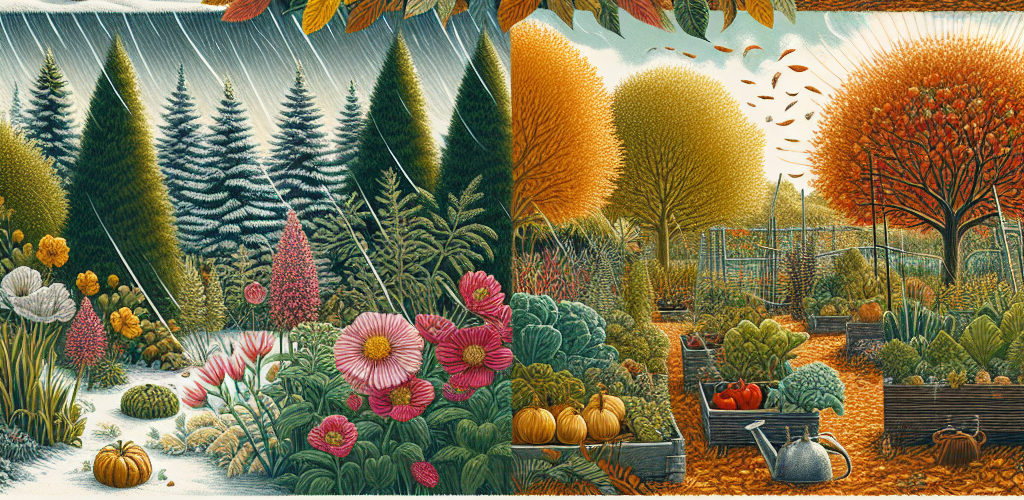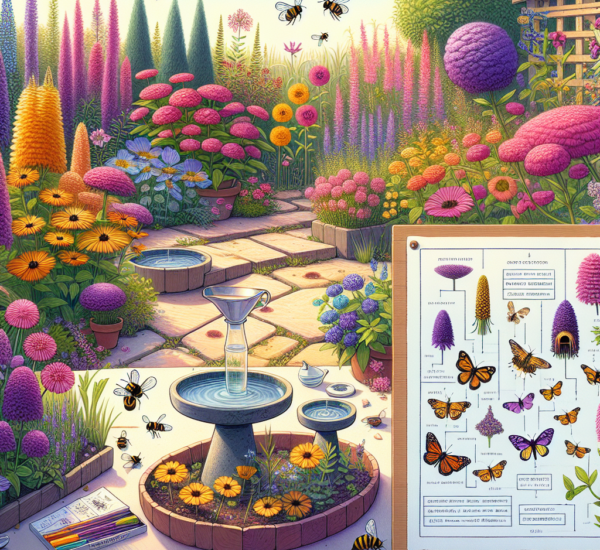Unlock the potential of your garden all year round with our comprehensive seasonal planting guides, customized for different climates to ensure thriving plants and bountiful harvests.
Introduction
Gardening can be immensely rewarding, providing beauty to your landscapes and fresh produce for your kitchen. However, to truly succeed, understanding how to plant seasonally according to your climate is crucial. In this guide, we’ll explore the best planting tips tailored to various climatic conditions. Whether you live in a frost-prone region or a tropical paradise, we’ve got you covered!
Table of Contents
- Understanding Climates
- Gardening in Temperate Climates
- Tips for Tropical Climates
- Arid Regions: Overcoming the Dry
- Continental Climates: Navigating Extremes
- Conclusion
- FAQ
Understanding Climates
Before delving into specific planting guides, it’s essential to understand the primary climate types that influence your planting strategy:
- Temperate: Characterized by moderate temperatures and four distinct seasons.
- Tropical: Warm temperatures year-round, with a wet and dry season.
- Arid: Minimal rainfall and high evaporation rates define these regions.
- Continental: Displays significant temperature variations between seasons, often experiencing extreme winters and summers.
By understanding these categories, you can optimize your gardening calendar to align with the natural rhythms of your climate.
Gardening in Temperate Climates
Spring Planting
Spring is one of the most exciting times for temperate gardeners. As frost risk diminishes, you can start planting early vegetables like peas, spinach, and lettuce. Flower enthusiasts should consider tulips and daffodils.
Summer Planting
The warm days of summer provide an ideal environment for planting tomatoes, peppers, and beans. Decorative plants like sunflowers and petunias flourish during this season.
Fall Harvest
As the temperatures start to drop, focus on planting garlic and onions for next year. Consider cold-tolerant vegetables such as broccoli and cabbage.
Winter Preparation
Winter might be time for a break, but it’s also perfect for preparing your soil with compost and planning next year’s garden layout.
For more tips on managing your garden through the winter, check out our article on Winter Gardening Tips.
Tips for Tropical Climates
Wet Season Planting
Tropical climates boast a unique growing season. During the wet months, focus on planting rice, taro, and other water-loving plants that thrive with increased rainfall.
Dry Season Adaptations
The dry season calls for resilient crops like sweet potatoes and cassava. It’s also an excellent time to create mulch beds to conserve soil moisture.
Explore more on this approach in our piece on Planting Strategies for Tropical Climates.
Arid Regions: Overcoming the Dry
Water Conservation Techniques
In arid climates, water is scarce, making xeriscaping an ideal approach. Native species like cacti and succulents require minimal watering and thrive in dry conditions.
Mulching and Soil Management
Use mulch to reduce evaporation. Consider planting cover crops such as alfalfa to improve soil health and retain moisture.
Learn about other innovative water-saving gardening methods here.
Continental Climates: Navigating Extremes
Spring and Early Summer
In continental climates, spring is the ideal time to plant hardy perennials like daylilies and durable vegetables like carrots and turnips.
Summer’s Heat
Utilize the longer daylight hours for growing sun-loving crops such as tomatoes and corn.
Managing Winter’s Chill
Winter is harsh, demanding careful selection of plants like kale that can survive frost. Mulching is essential to protect roots.
For further detail, read our in-depth article on Gardening in Extreme Climates.
Conclusion
Your success in gardening highly depends on understanding the unique climate in which you garden. By following climate-specific guidelines, you can enhance your garden’s productivity regardless of the season. Explore, experiment, and enjoy your gardening journey!
Take Action Today!
Ready to boost your gardening success across climates? Dive back into the guide or explore our vast library of gardening resources. Happy planting!




